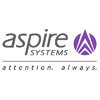
i
MOURI Tech
Filter interviews by
MOURI Tech Network Administrator Interview Questions and Answers
MOURI Tech Network Administrator Interview Experiences
1 interview found
I applied via Walk-in and was interviewed before Oct 2023. There were 3 interview rounds.
(1 Question)
- Q1. Self introduction
(1 Question)
- Q1. Question related on network and system hardware
(1 Question)
- Q1. One to one round with manager he is asking about some tech related questions
Interview questions from similar companies


(2 Questions)
- Q1. How to configure vlan?
- Ans.
VLANs can be configured using switch management interfaces or command line interfaces.
Identify the VLANs needed and assign them a VLAN ID
Configure the switch ports to be members of the appropriate VLAN
Configure the VLAN interfaces on the switch
Configure VLAN trunking protocol (VTP) if necessary
Verify the VLAN configuration using show commands
- Q2. How to configure ACL?
- Ans.
ACL can be configured by defining rules to permit or deny traffic based on source/destination IP, port, and protocol.
Identify the traffic that needs to be controlled
Define the rules for permitting or denying traffic
Apply the ACL to the appropriate interface or VLAN
Regularly review and update the ACL to ensure it meets the changing needs of the network
Interview Preparation Tips
Skills evaluated in this interview

I applied via Naukri.com and was interviewed in Dec 2020. There was 1 interview round.
Interview Questionnaire
5 Questions
- Q1. Explain OSI model
- Ans.
The OSI model is a conceptual framework used to describe the communication functions of a network.
The model has 7 layers, each with a specific function.
The layers are: Physical, Data Link, Network, Transport, Session, Presentation, and Application.
Each layer communicates with the layer above and below it.
The model helps ensure interoperability between different network devices and software.
Example: When you visit a web...
- Q2. What is ssl offloading in f5
- Ans.
SSL offloading is a process of removing SSL encryption from incoming traffic and decrypting it before sending it to the backend servers.
SSL offloading is performed by a load balancer like F5 to reduce the processing load on backend servers.
It improves server performance and reduces latency by offloading SSL processing to a dedicated hardware or software.
F5 SSL offloading can be configured to support multiple SSL certif...
- Q3. What is SNAT in f5
- Ans.
SNAT stands for Secure Network Address Translation and is a feature in F5 that allows for the translation of IP addresses.
SNAT is used to translate the source IP address of outgoing traffic to a different IP address.
This can be useful in scenarios where multiple devices are sharing a single public IP address.
SNAT can also be used to improve security by hiding the actual IP address of a device from the public internet.
F...
- Q4. What is STP, HSRP,FRRP, what is the difference between hsrp and vrrp and why hsrp is better than vrrf
- Ans.
STP, HSRP, and FRRP are network protocols used for redundancy and failover. HSRP and VRRP are similar but HSRP is preferred.
STP (Spanning Tree Protocol) prevents loops in a network by disabling redundant links
HSRP (Hot Standby Router Protocol) and VRRP (Virtual Router Redundancy Protocol) provide redundancy by allowing multiple routers to share a virtual IP address
FRRP (Fast Router Redundancy Protocol) is a Cisco propr...
- Q5. What is xlate table in ASA and ipsec tunnel trouble shooting
- Ans.
The xlate table in ASA is used to keep track of translations between internal and external IP addresses. It is important for IPsec tunnel troubleshooting.
The xlate table is used to map internal IP addresses to external IP addresses
It is important for troubleshooting IPsec tunnels because it allows you to see if traffic is being translated correctly
You can view the xlate table using the 'show xlate' command in the ASA C...
Interview Preparation Tips
Skills evaluated in this interview

I applied via Naukri.com and was interviewed in Dec 2021. There was 1 interview round.
(2 Questions)
- Q1. Why should we hire you
- Q2. Why you left your previous company
Interview Preparation Tips
- Active Directory
- office 365
- DNS
- DHCP
- Routing
- CCNA
- switching protocol
Q2. How you can manage a toxic environment?


(2 Questions)
- Q1. How to configure vlan?
- Ans.
VLANs can be configured using switch management interfaces or command line interfaces.
Identify the VLANs needed and assign them a VLAN ID
Configure the switch ports to be members of the appropriate VLAN
Configure the VLAN interfaces on the switch
Configure VLAN trunking protocol (VTP) if necessary
Verify the VLAN configuration using show commands
- Q2. How to configure ACL?
- Ans.
ACL can be configured by defining rules to permit or deny traffic based on source/destination IP, port, and protocol.
Identify the traffic that needs to be controlled
Define the rules for permitting or denying traffic
Apply the ACL to the appropriate interface or VLAN
Regularly review and update the ACL to ensure it meets the changing needs of the network
Interview Preparation Tips
Skills evaluated in this interview

I applied via Naukri.com and was interviewed in Dec 2020. There was 1 interview round.
Interview Questionnaire
5 Questions
- Q1. Explain OSI model
- Ans.
The OSI model is a conceptual framework used to describe the communication functions of a network.
The model has 7 layers, each with a specific function.
The layers are: Physical, Data Link, Network, Transport, Session, Presentation, and Application.
Each layer communicates with the layer above and below it.
The model helps ensure interoperability between different network devices and software.
Example: When you visit a web...
- Q2. What is ssl offloading in f5
- Ans.
SSL offloading is a process of removing SSL encryption from incoming traffic and decrypting it before sending it to the backend servers.
SSL offloading is performed by a load balancer like F5 to reduce the processing load on backend servers.
It improves server performance and reduces latency by offloading SSL processing to a dedicated hardware or software.
F5 SSL offloading can be configured to support multiple SSL certif...
- Q3. What is SNAT in f5
- Ans.
SNAT stands for Secure Network Address Translation and is a feature in F5 that allows for the translation of IP addresses.
SNAT is used to translate the source IP address of outgoing traffic to a different IP address.
This can be useful in scenarios where multiple devices are sharing a single public IP address.
SNAT can also be used to improve security by hiding the actual IP address of a device from the public internet.
F...
- Q4. What is STP, HSRP,FRRP, what is the difference between hsrp and vrrp and why hsrp is better than vrrf
- Ans.
STP, HSRP, and FRRP are network protocols used for redundancy and failover. HSRP and VRRP are similar but HSRP is preferred.
STP (Spanning Tree Protocol) prevents loops in a network by disabling redundant links
HSRP (Hot Standby Router Protocol) and VRRP (Virtual Router Redundancy Protocol) provide redundancy by allowing multiple routers to share a virtual IP address
FRRP (Fast Router Redundancy Protocol) is a Cisco propr...
- Q5. What is xlate table in ASA and ipsec tunnel trouble shooting
- Ans.
The xlate table in ASA is used to keep track of translations between internal and external IP addresses. It is important for IPsec tunnel troubleshooting.
The xlate table is used to map internal IP addresses to external IP addresses
It is important for troubleshooting IPsec tunnels because it allows you to see if traffic is being translated correctly
You can view the xlate table using the 'show xlate' command in the ASA C...
Interview Preparation Tips
Skills evaluated in this interview
MOURI Tech Interview FAQs
Tell us how to improve this page.
MOURI Tech Interviews By Designations
- MOURI Tech Associate Software Engineer Interview Questions
- MOURI Tech Associate Trainee Interview Questions
- MOURI Tech Technical Consultant Interview Questions
- MOURI Tech Processing Executive Interview Questions
- MOURI Tech Quality Analyst Interview Questions
- MOURI Tech Senior Software Engineer Interview Questions
- MOURI Tech Senior Specialist Interview Questions
- MOURI Tech Abap Technical Consultant Interview Questions
- Show more
Interview Questions for Popular Designations
- Network Engineer Interview Questions
- Senior Network Engineer Interview Questions
- Network Support Engineer Interview Questions
- L2 Network Engineer Interview Questions
- Network Engineer L1 Interview Questions
- Network Security Engineer Interview Questions
- Network Specialist Interview Questions
- Network Analyst Interview Questions
- Show more
People are getting interviews through
Network Administrator Interview Questions from Similar Companies
Fast track your campus placements
|
Software Engineer
280
salaries
| ₹2 L/yr - ₹10 L/yr |
|
Associate Software Engineer
262
salaries
| ₹1.6 L/yr - ₹7.1 L/yr |
|
Senior Specialist
207
salaries
| ₹4.7 L/yr - ₹18.3 L/yr |
|
Technical Consultant
179
salaries
| ₹1.5 L/yr - ₹7.6 L/yr |
|
Technical Architect
176
salaries
| ₹9 L/yr - ₹30 L/yr |

TCS

Infosys

Wipro

HCLTech
Calculate your in-hand salary
- Home >
- Interviews >
- MOURI Tech Interview Questions >
- MOURI Tech Network Administrator Interview Questions









